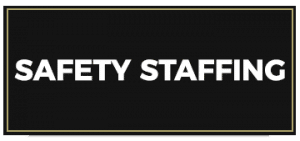The Future of OSHA’s Voluntary Protection Program

OSHA’s Voluntary Protection Program (VPP) was established in 1982 to “promote effective worksite-based safety and health” through a series of “performance-based criteria and a managed safety and health system”. In short, VPP recognizes companies and organizations who provide the safest worksites to their employees. While the program has undoubtedly resulted in safer worksites, there is reason to believe that the program may decline under President Biden’s administration.
There are a handful of arguments against expanding the VPP program and why it will not likely be expanding under a Biden OSHA. Two frequently discussed arguments are:
- “OSHA should not spend scarce resources on employers who already have very low injury and illness rates”
This argument has been around since the early days of the program and, while it appears to have merit on the surface, it’s not right. The VPP program allowed employers to demonstrate to OSHA how to make the workplace safer. Simple OSHA compliance alone will NOT result in the safest place to work. The reasons why this is true are many including the fact that OSHA doesn’t have standards for many serious hazards and their ability to develop and issue standards quickly is hampered by existing laws and procedures that must be followed. VPP sites make a big difference in the communities where they operate by providing a safe workplace and by mentoring to other employers who want to improve. The VPP program should be touted by OSHA as evidence that employers are able to manage safety and health successfully and produce measurable results.
- “With both the Senate and House of Representatives being controlled by Democrats, the likelihood of codification of VPP seems very low”
Based on the past and the current political climate it seems unlikely Congress will codify the VPP program into the OSH Act. Without codification it is possible for OSHA to dismantle or curtail the program.
What can be expected going forward?
- OSHA may raise the bar for participation in the program.
OSHA may choose to raise the bar for participation in the program. Currently, participation is limited to employers whose injury and illness rates (DART and TCIR) are below the national industry average for the industry they operate in based on the employer’s NAICS code. OSHA could certainly raise this bar by limiting participation to employers who are at or below 75% or even 50% of that national average.
- OSHA will likely make changes to the policy dictating how participants are suspended or removed from the program when a fatality occurs or serious citations are issued.
OSHA currently removes employers from active status following a worksite fatality until the investigation has been completed and employee complaints are investigated without regard to VPP status. OSHA policy dictates what action OSHA will take if the fatality is work-related and citations are issued. Participants can be removed from the program. OSHA will likely take additional steps to strengthen the removal process and bolster the process of reevaluation prior to allowing the facility to reenter the program.
The Voluntary Protection Program has made a real and measurable difference in the lives of thousands of employees across the country. There are strong arguments to maintain the program and use it as a beacon to allow other employers to see the value of a safe and healthful workplace.
If you have questions or need help regarding anything safety related, please reach out to FDRsafety.



